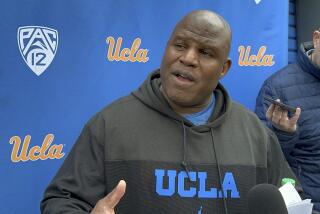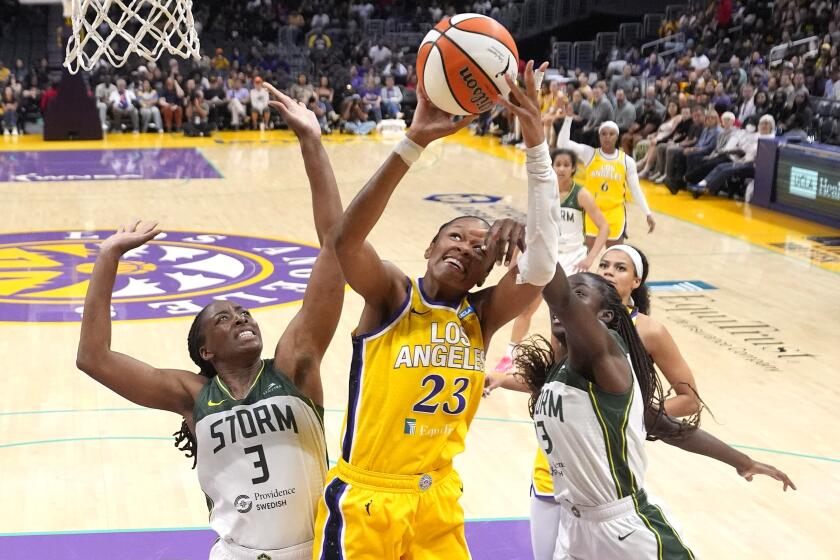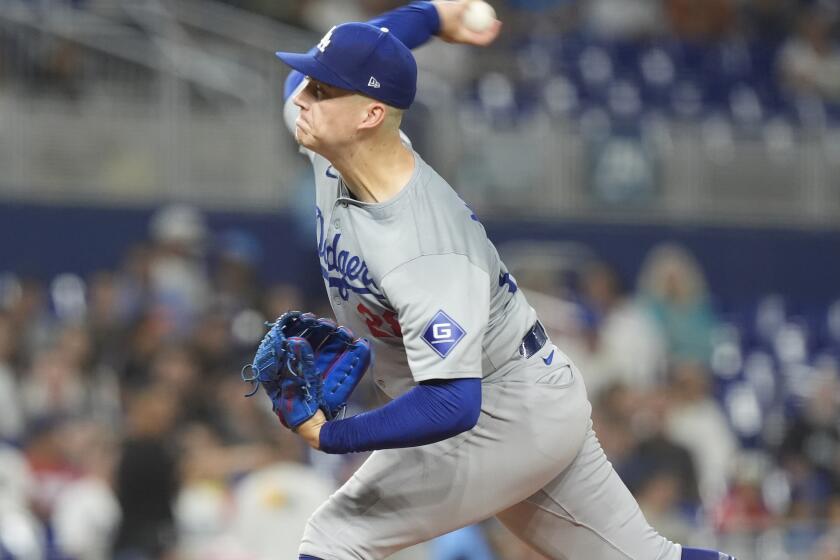A consumer’s guide to the best and worst of sports media and merchandise. Ground rules: If it can be read, played, heard, observed, worn, viewed, dialed or downloaded, it’s in play here.
What: “Playing the Field: Sports and Sex in America”
Where: HBO, Wednesday, 9-10 p.m.
The title of this documentary implies it is about groupies and athletes’ promiscuity. It touches on those topics, but it covers a lot more than that.
It’s about beautiful bodies doing miraculous things, about using sex appeal to sell, about Sports Illustrated putting Anna Kournikova on its cover, even though she has never won a tournament, about homosexuality in sports, about Magic Johnson and the threat of AIDS, about combating the image of lesbianism in women’s sports, about stereotypes and much more. It’s about seemingly every aspect of the various roles sex play in sports.
HBO in some ways tackled a topic too broad and the result is a film lacking focus. One moment a young Joe Namath is shown saying, “It’s un-American for a single man not to have a drink with a young lady every once in a while,” and moments later the topic is homophobia.
Viewers are shown a 1962 fight in which Emile Griffith beat Benny Paret so severely that Paret died 10 days after the fight. It’s pointed out that Griffith was furious after Paret accused him of being a homosexual at the weigh-in.
Dave Kopay, an NFL running back from 1964 to ’72 who acknowledged his homosexuality in a book a few years after he retired, talks about how he tried to be tougher than anyone else to hide his secret. “I couldn’t be a wimp,” he says.
The film’s script, written by Frank Deford, points out that gay men have an easier time competing in individual sports. Tennis’ Bill Tilden and figure skating’s Rudy Galindo are held up as examples.
Jan Stephenson and Laura Baugh are used as examples of how the LPGA in the ‘70s attempted to combat its image of lesbianism. Dick Schaap talks about doing a cover story on Stephenson for Sport magazine, and admits she was on the cover “because she looked good.”
Martina Navratilova talks about the freedom she felt after admitting her sexual preferences. “More women should find the guts to do it,” she says.
There is a segment on the movie “Personal Best,” which explored lesbianism in track and field, and there are segments on the Dallas Cowboy cheerleaders and the Laker Girls.
John Salley talks about life as an NBA player and A.C. Green talks about joining the Lakers in 1985 and how his teammates gave him no more than six weeks to stick with his vow of abstinence.
There is also a segment on the U.S. women’s national soccer team and Brandi Chastain yanking off her shirt when the team won the World Cup in 1999.
As we said, the documentary covers a lot of territory.
More to Read
Go beyond the scoreboard
Get the latest on L.A.'s teams in the daily Sports Report newsletter.
You may occasionally receive promotional content from the Los Angeles Times.










